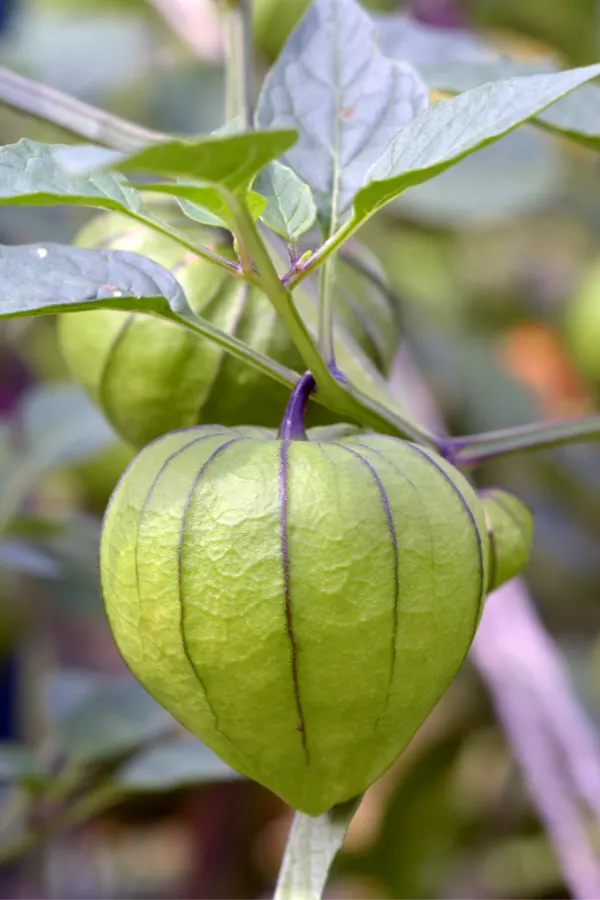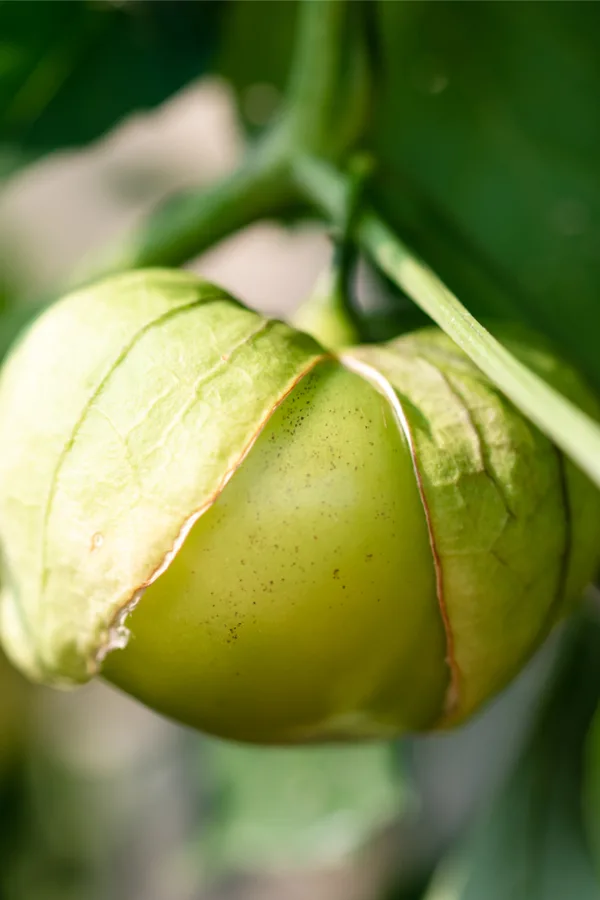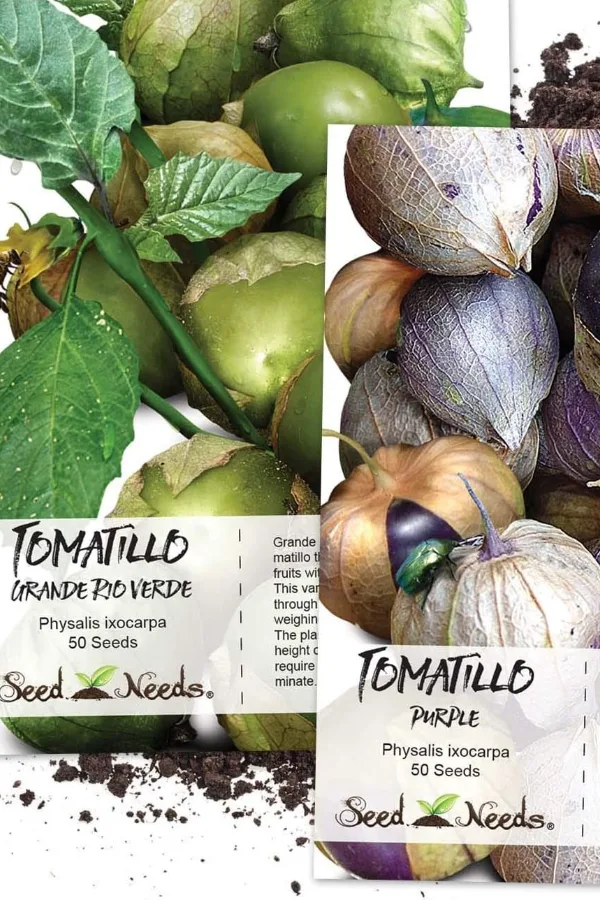We had our first opportunity to grow tomatillos last year, and wow, did this unique plant with a funny name earn a “forever” spot on our annual must-grow list!
The tomatillo plant is an interesting one for sure. Often confused as a little green tomato, the tomatillo is not a tomato at all. And, as we soon discovered, it has a unique and delicious flavor all to its own.
We decided to try our hand at growing tomatillos to make our own salsa verde. The somewhat tangy, tart green salsa, with a touch of jalapeno heat quickly is one of our absolute favorites. In fact, as much as we love traditional salsa, it is our first choice.

Perfect on everything from eggs, sandwiches, tortilla chips and more, we can never get enough. And then we tasted green chicken chili verde made from tomatillos for the first time traveling through New Mexico – and we knew we just had to try to grow tomatillos back at the farm! See : Chicken Chili Verde Recipe
How To Grow Tomatillos
The tomatillo, like the tomato, is a member of the nightshade family. But they certainly set fruit differently. Instead of turning into small round fruit from the flower, tomatillo blooms turn into papery-like lanterns that dangle from the branches.
From there, the paper shells fill out slowly from the inside with 2″ round fruits. As the fruit matures, the papery outer skin begins to crack, revealing a smooth, firm green globe of goodness inside.

Tomatillos can be grown successfully in a traditional garden, raised beds, or containers. In fact, as part of our trial last year, we grew it in all 3 settings. And, without fail, it produced amazingly well with all three growing methods.
Growing Tomatillo – Soil, Light & Water Requirements
Hailing from Mexico, tomatillo plants grow best in full sun and warm temperatures. They can be planted exactly as you would a tomato or pepper plant, after the threat of frost has passed. In fact, if you can grow tomatoes where you live, you can grow tomatillos.
Tomatillos needs about 90 to 100 days from seed to harvest, so starting plants indoors or using transplants is the best method. Just as with tomatoes and pepper plants, it allows enough time for plants to produce a good harvest.
Although fertile, well-draining soil is a big plus, tomatillos do not require as many nutrients from the soil as a tomato plant does. In addition, they are much less likely to be bothered by disease or pests.

Plant More Than 1!
One interesting fact with tomatillos is that you can’t grow just one plant. They are unable to self-pollinate, and need at least one other tomatillo plant nearby (within 25 feet is best) to produce.
Finally, like their fellow nightshade cousins, tomatillos will perform best with a bit of support. Stake or cage plants to keep the branches from cracking or splitting from the weight of the fruit.
As for watering needs, treat tomatillos as a traditional garden vegetable plant. Tomatillos are a bit more drought resistant than most garden vegetables, but still need adequate water to produce. If growing in pots, daily watering will most likely be needed.

Although not as needy for nutrients, tomatillo plants benefit greatly from a bit of early fertilizer. Once transplants have established in the soil, fertilize every few weeks with an all-purpose organic fertilizer or compost tea. Once fruit begins to set, cease fertilizing to allow the plants to concentrate on production.
Harvesting – Growing Tomatillos
So how do you know when a tomatillo is ready to harvest? Unlike a tomato, it won’t turn green. Instead, when the husk begins to brown a bit and split, it is a sign to harvest. In fact, it is not uncommon to have some tomatillos that fall out of their husk to the ground when ripe.
The tomatillo is an indeterminate plant, meaning it will keep on producing until the first frost. Much like other vegetable plants, picking often will force the plant into continual production.
If a plant becomes too full of ripening fruit, it will stop producing new blooms. As for potential harvests, we easily harvested a bushel+ from each plant. And yes, it makes incredible salsa verde! See : Our Salsa Verde Recipe
Varieties To Try – Growing Tomatillos
There are several varieties to grow, with the standard green tomatillo the most common. In addition to the green, we are growing a purple variety. It certainly will be interesting to make salsa-purple! Seed Links : Purple Tomatillo Seeds, Green & Purple Tomatillo Seeds

Here is to trying your hand this year at growing tomatillos! Happy Gardening – Jim and Mary.
Jim and Mary Competti have been writing gardening, DIY and recipe articles and books for over 15 years from their 46 acre Ohio farm. The two are frequent speakers on all things gardening and love to travel in their spare time.
As always, feel free to email us at thefarm@owgarden.com with comments, questions, or to simply say hello! You can sign up for our free email list in the subscribe now box in the middle of this article. Follow us on Facebook here : OWG Facebook. This article may contain affiliate links.
